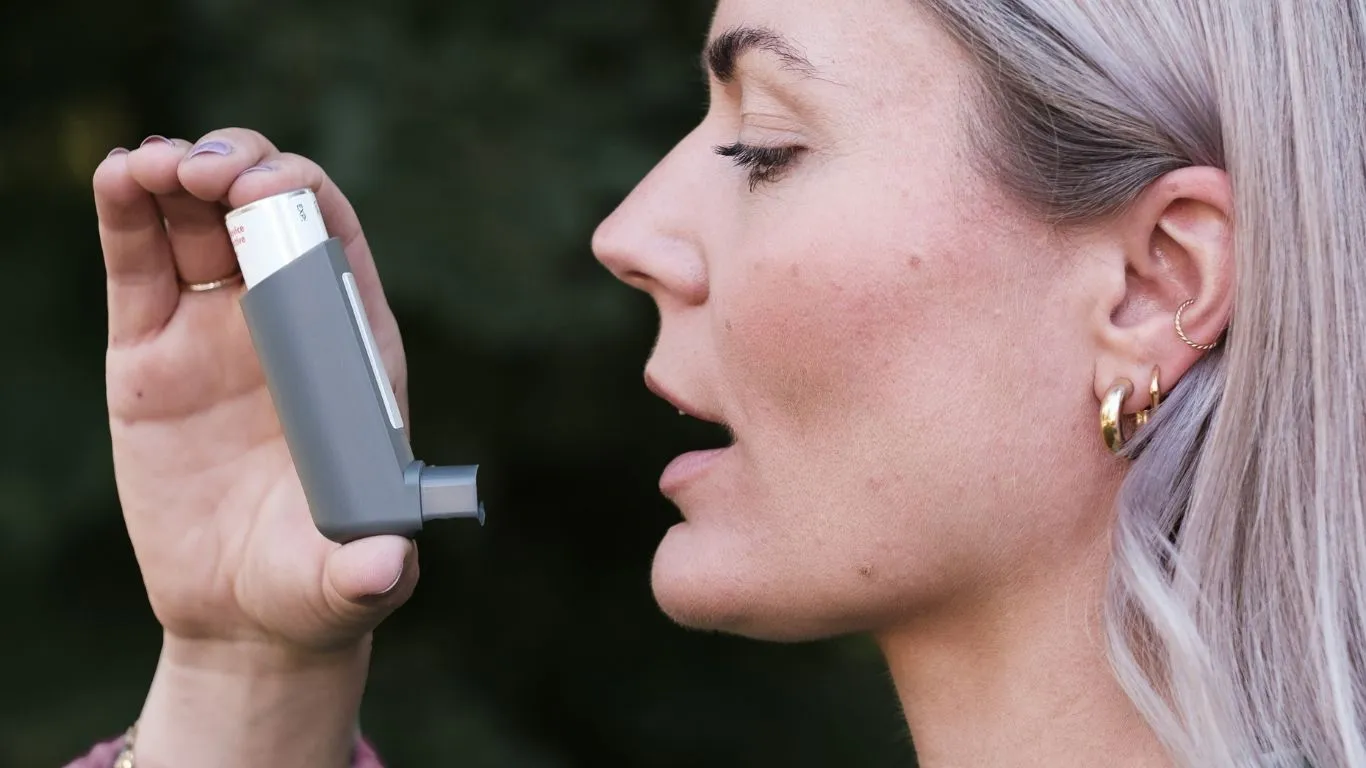Asthma Triggers That Worsen Your Breathing: Avoid These Common Culprits
Asthma triggers can be sneaky little things — one moment you’re feeling fine, and the next, you’re gasping for air like you just ran a marathon. As a pulmonary nurse practitioner, I’ve seen how frustrating and even scary it can be for folks dealing with asthma, especially when they’re not sure what’s setting it off. Whether it’s pet dander, cold air, or just the scent of a new candle, triggers can vary so much from person to person. And trust me, I’ve seen it all — patients who had no clue that their beloved down pillows or that “harmless” air freshener were turning their lungs into a battleground.
What Are Asthma Triggers, Really?

So let’s break it down. Asthma triggers are basically anything that causes your airways to react — swelling, narrowing, and producing more mucus. That combination? Not a good time. Your breathing passages become irritated, which leads to wheezing, coughing, shortness of breath, or full-blown asthma attacks. It’s like your lungs are throwing a tantrum.
From what I’ve witnessed in clinical settings, people often assume asthma is “under control” just because they’re not having daily symptoms. But the truth is, even well-managed asthma can spiral fast if the right trigger (or wrong one, really) enters the picture. I’ve had patients come in shocked after a sudden flare-up, only to find out their new cleaning spray or even a shift in the weather was the culprit.
Types of Common Asthma Triggers
Here’s where things get a little complicated — there’s no one-size-fits-all trigger. What bothers one person might not affect another at all. But over the years, I’ve noticed some repeat offenders that come up again and again:
- Allergens – Pollen, dust mites, pet dander, and mold top this list. Seriously, I’ve had patients break out in wheezing fits just from hugging their cat.
- Irritants in the Air – Smoke (from cigarettes or even fireplaces), strong odors, and pollution can really do a number on the lungs.
- Respiratory Infections – Colds and the flu might seem like everyday nuisances, but for asthmatics, they can quickly escalate into ER visits.
- Weather Conditions – Cold air, high humidity, or sudden temperature changes are all frequent triggers. I’ve seen people in the ER just because the seasons changed.
- Exercise – Especially in cold, dry air. But don’t worry, we’ll talk later about how to exercise safely with asthma.
- Emotions and Stress – Anxiety, laughing hard, even crying — all of these can lead to rapid breathing and, you guessed it, a flare-up.
Why Knowing Your Triggers is a Game Changer

This is where a little detective work can go a long way. One of the first things I do with new asthma patients is help them start a symptom journal. Sounds simple, but it’s incredibly effective. Jotting down when symptoms happen, what you were doing, where you were, and what was in the air (literally) can reveal patterns you didn’t even know existed.
I once had a patient who thought their asthma attacks were random — turns out, every flare-up happened after vacuuming. A deeper look revealed it wasn’t the vacuuming itself, but the dust being kicked up. Solution? HEPA filters and wearing a mask while cleaning. Problem solved. And no more ER visits for them.
Environmental Triggers You Might Be Overlooking
Sometimes the environment around us is quietly working against our lungs. And if you’re like a lot of patients I’ve treated, you might not even suspect half of these:
- Indoor Mold – Found in bathrooms, basements, and even under kitchen sinks. Musty smell? That’s your clue.
- Fragrances – Perfumes, air fresheners, even some essential oils can cause a tight chest and wheezing. I had to stop using certain lotions at work because they’d trigger reactions in sensitive patients.
- Household Cleaners – Bleach, ammonia, and aerosol sprays are repeat offenders. Natural cleaners can help, but always read the labels.
- New Furniture or Carpet – These often release volatile organic compounds (VOCs), and your lungs are not fans of those.
Let me be clear — you don’t have to live in a bubble to manage asthma. But once you know your enemies, you can take smart steps to reduce your exposure. That’s not just me saying that; it’s what I’ve seen time and again in real patient outcomes.
How Asthma Triggers Differ from Person to Person

This part always surprises people — no two asthma patients are exactly the same. What sets off one person’s asthma might not even register for someone else. For example, I had two patients — siblings — where one reacted badly to pollen and the other had no issue with it at all but couldn’t be in the same room as a scented candle. Genetics? Maybe. But it really comes down to your unique immune system and sensitivities.
That’s why education and personalization are so important. The more you know about how your body reacts, the better equipped you are to prevent those scary moments when you can’t catch your breath.
How to Identify Your Personal Asthma Triggers

Let’s talk real life for a minute. In clinic, I always ask patients the same thing: “When was your last asthma flare-up and what was going on that day?” Most times, they pause — and then the lightbulb goes off. “Oh yeah, I was cleaning the attic,” or “I was around my cousin’s dog.” That moment is gold because it shows just how often we miss the link between asthma triggers and our everyday routines.
Here’s the truth: You can’t avoid your triggers if you don’t know what they are. So step one? Get familiar. Keep a daily log — nothing fancy, just a notebook or phone note. Log these details:
- Where you were
- What you were doing
- What the weather was like
- Any unusual smells or exposures (cleaning, pets, smoke)
- What symptoms you had (tight chest, cough, wheeze, etc.)
I had a teen patient who swore she didn’t have any clear triggers — until we tracked her symptoms and realized every attack came after gym class on cold days. That insight helped us adjust her care plan, and she went months without an attack. It really does make a difference.
Tools That Can Help
Thankfully, there are tools out there that can do some of the detective work for you. Peak flow meters, for example, help track how well your lungs are working. I always suggest my patients use one daily and watch for drops in their readings — it’s often the first sign that a trigger is sneaking up.
And there are now apps that let you sync your peak flow readings, symptom logs, and even local pollen counts. Pretty cool, right? A little tech with a side of lung protection.
Asthma Triggers in Kids vs. Adults

Here’s something I see a lot — parents bringing in their kids with asthma, feeling totally overwhelmed. And understandably so. Kids don’t always have the words to describe how they’re feeling. I once had a 5-year-old who kept saying her chest felt “scratchy” — turns out, she meant tightness from an oncoming asthma attack triggered by her classroom’s dusty rugs.
In kids, triggers are often linked to:
- Viral infections (especially colds)
- Indoor allergens (think dust mites and pet dander)
- Exercise or even playing hard outside
- Emotional excitement or crying fits
Adults, on the other hand, often have more complex or layered triggers — like combining stress with environmental irritants. And hormonal shifts can play a role too (shout out to perimenopause for making things even more interesting).
The bottom line? Age matters, and so does life stage. The more tuned in you are to how your body responds at different times, the easier it becomes to avoid the landmines.
Managing Asthma Triggers at Home

One of the best pieces of advice I give patients is this: Control your home environment like your lungs depend on it — because they kinda do. Most people spend the majority of their time indoors, so your living space can either be your safe zone or your trigger zone.
Quick Fixes That Make a Big Difference:
- Use a HEPA filter – These suck up allergens like a champ. I use one in my bedroom and it made a huge difference with nighttime coughing.
- Go fragrance-free – No one needs lavender linen spray if it means wheezing all night. Switch to unscented everything where you can.
- Keep pets off furniture and out of bedrooms – I know, I know — I love dogs too. But pet dander is no joke for some folks.
- Wash bedding weekly – Hot water is key here to kill dust mites.
- Check for mold – Especially in places like your bathroom, under sinks, or in that old basement storage room.
And if you’re like me and love a good candle? Try battery-operated ones or diffusers with water-only vapor. I had to break up with my vanilla bean obsession when I realized it was triggering patients — sometimes even during clinic visits!
When Triggers Can’t Be Avoided
Okay, so what happens when you know your triggers but can’t always avoid them? That’s real life. Maybe you work in a place with strong odors, or you’re visiting family with pets. The trick is preparation.
I always advise carrying a rescue inhaler everywhere — not in your car, not at home, but actually on you. Pre-treating with an inhaler before known exposures (like cold air or exercise) can prevent a lot of misery.
Also, chat with your provider (or hey, if you’re one of mine, you already know this) about adjusting your controller meds during high-risk times — like allergy season or during cold weather. It’s not about overmedicating, it’s about staying a step ahead.
It’s all about balance. You don’t need to avoid living your life. You just need to live it with the right tools, knowledge, and a little extra planning. And honestly? That part gets easier over time. Especially when you’re not spending your nights coughing yourself awake.
Building an Asthma-Friendly Lifestyle That Actually Works

Here’s the deal — once you’ve figured out your asthma triggers and taken steps to manage your environment, the next level is living your life *on your terms* while keeping your lungs happy. This isn’t about bubble-wrapping your world; it’s about working with your asthma, not against it.
In my own practice, I’ve seen so many people thrive once they stop fighting their condition and start flowing with it. One of my patients, a high school soccer coach, thought his asthma would end his career. But with smart medication timing, a solid game-day plan, and a little trial and error, he hasn’t missed a season in years.
So what does an asthma-friendly lifestyle even look like? Well, it’s different for everyone, but here are a few basics that consistently help:
- Stay active – Don’t be afraid of exercise. With the right pre-treatment (a quick puff from your inhaler before you start), most folks can stay active without issues.
- Eat smart – Some people notice flare-ups after dairy or sulfite-heavy foods. Track what works and what doesn’t — your body’s talking, just listen.
- Manage stress – I can’t say this enough. Stress can be a huge trigger. Try deep breathing, journaling, therapy, or anything that calms your nervous system.
- Don’t skip your meds – Maintenance inhalers and other prescribed treatments aren’t optional. They’re your lungs’ bodyguards.
And please, I beg of you — make those follow-up appointments. Asthma management isn’t a one-and-done kind of thing. Checking in regularly helps fine-tune your plan and adjust when life throws curveballs (hello, allergy season).
Traveling with Asthma: Planning for Triggers on the Go

Now, just because you’ve got asthma doesn’t mean you need to be chained to your home air purifier. I’ve got patients who travel the world — beaches, mountains, crowded cities — and do just fine. The key? Preparation, baby.
Here’s how to travel smarter with asthma:
- Pack backups – Bring two of everything. Two rescue inhalers, two spacers, extra medication. Luggage gets lost, things get forgotten — don’t get caught without your lifeline.
- Check the air quality – Apps like AirVisual or IQAir can tell you what to expect, especially in big cities or high-pollution zones.
- Allergy-proof your hotel – Ask for a pet-free, smoke-free room. Bring a pillow cover if you’re super sensitive to dust mites (trust me, hotel pillows can be sneaky).
- Know where to get care – Before you leave, find out where the closest clinic or ER is. Hopefully, you won’t need it — but if you do, you’ll be glad you looked it up ahead of time.
When I traveled to Denver for a conference, the higher altitude hit harder than I expected. I’d packed my rescue inhaler, but having a spacer on hand made a world of difference. Lesson learned: don’t underestimate how much the environment change can stir things up.
When to Talk to Your Doctor About Changing Your Asthma Plan
If your asthma isn’t well-controlled — meaning you’re using your rescue inhaler more than twice a week, waking up at night, or avoiding activities — it’s time to re-evaluate. There’s zero shame in that. Your asthma plan should flex with your life, not stay rigid when it’s no longer working.
I encourage patients to keep an open line with their provider, even between regular check-ups. Notice a change in symptoms? Experiencing more flare-ups in spring? That’s a great time to adjust things before it becomes a problem. Prevention is always the goal.
And if you’re not sure whether your current doctor is giving you the attention or tools you need — advocate for yourself. You deserve someone who listens and creates a care plan that actually fits your reality.
Wrapping Up: Your Lungs, Your Life
So here’s my final thought — you’re in charge. Yes, asthma can be annoying, unpredictable, even downright scary at times. But you’re not powerless. When you know your triggers, track your symptoms, stay on top of meds, and create an environment that supports healthy breathing — you’re setting yourself up for freedom, not limitations.
I’ve seen patients go from anxious and limited to confident and thriving, simply because they learned how to work with their asthma instead of around it. And that shift? That’s everything.
If you’re looking for more medically sound guidance or research-backed tips, I highly recommend checking out trusted sources like NIH, Health.com, and CDC. They’ve got some excellent, up-to-date info that complements what you and your care team are already doing.
Disclaimer
This article is intended for general informational purposes only and should not be considered medical advice. Always consult with your healthcare provider or asthma specialist before making changes to your treatment plan or medication regimen. What works for one person might not be appropriate for another, and only a qualified professional can determine the best course of action based on your individual needs.

Bianca Nala is a compassionate Nurse Practitioner with a strong background in primary and respiratory care. As a health writer for Healthusias.com, she combines her clinical expertise with a talent for clear, relatable storytelling to help readers better understand their health. Bianca focuses on topics like asthma, COPD, chronic cough, and overall lung health, aiming to simplify complex medical topics without losing accuracy. Whether she’s treating patients or writing articles, Bianca is driven by a single goal: making quality healthcare knowledge accessible to everyone.






